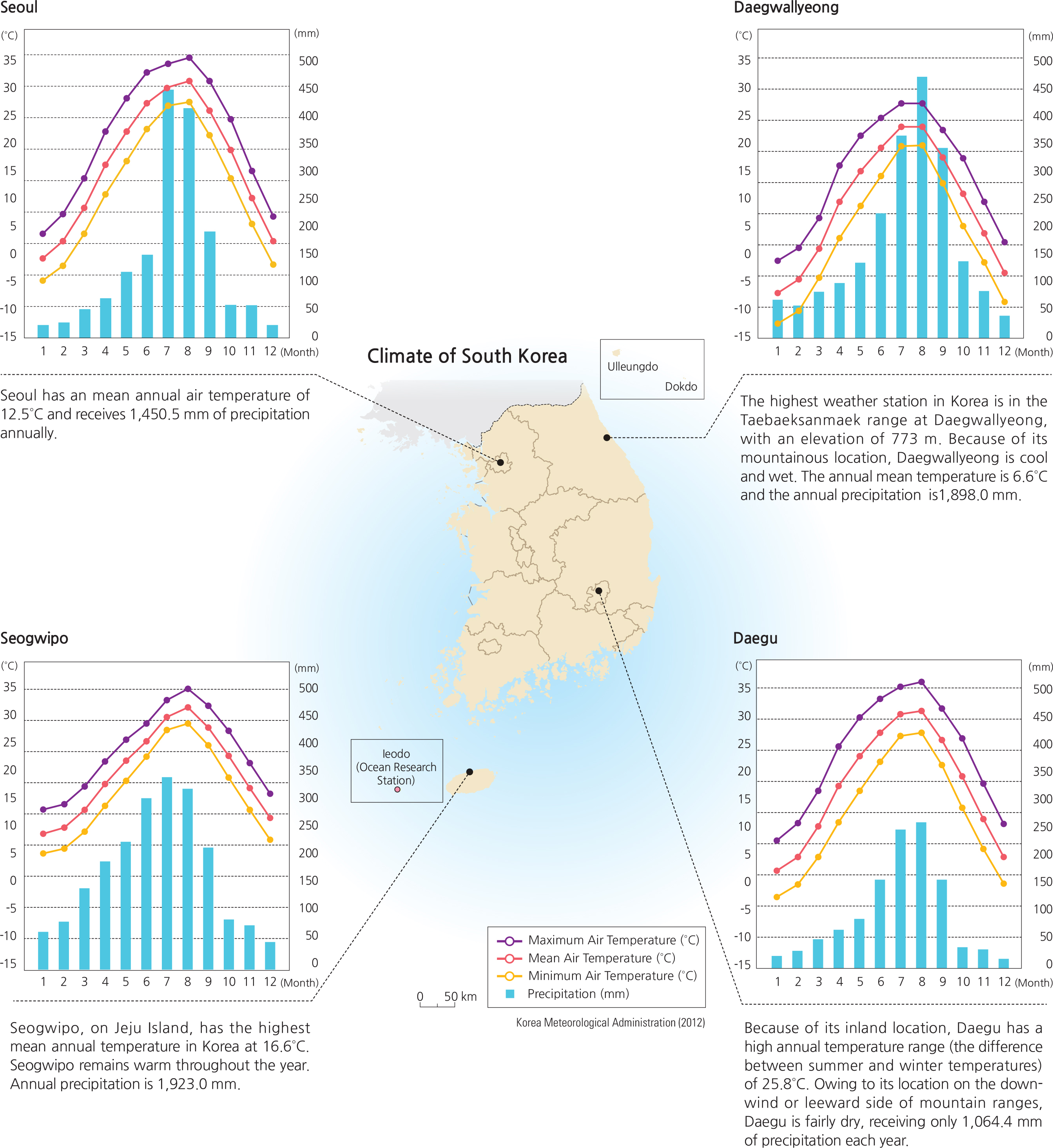The spatial distribution of climate in Korea is determined by key factors such as latitude, elevation, geographic location, the different heating properties of land and sea, ocean currents, and the East Asian Monsoon system. Because of the East Asian monsoon, it is hot and humid during the summer, but cold and dry during the winter.
The difference in temperature between the north and south is because areas closer to the equator receive more intense solar energy. The annual mean air temperature at Seogwipo (16.6˚C) on the southernmost tip of South Korea is much higher that at Cheorwon (10.2˚C), on the northernmost tip of South Korea, showing the wide range of air temperature between different latitudes.
Climate also depends on elevation. The annual mean air temperature at Daegwallyeong (773 m above sea level), the highest weather station in South Korea, is 6.6˚C. Hongcheon is at a similar latitude but lower elevation (141 m above sea level) and has a higher temperature of 10.3˚C.
Korea is largely characterized by a continental climate due to the effects of the Eurasian continent. However, the climate of the coastal areas, mostly governed by the ocean, differs from that of the inland areas. The annual mean temperature range for Daejeon is only 0.3˚C greater than that of Boryeong, which is adjacent to the coast. The average temperature during the summer (June, July, and August) in
Daejeon is approximately 1.3˚C higher than that in Boryeong.
The Asian monsoon system over East Asia (including Korea, China, and Japan) is formed due to the land-sea distribution and the associated difference in heating properties. While cold, dry wind blows into the Korean Peninsula in the winter due to the continental effect, hot and humid wind blows into Korea during the summer due to the effect of the North Pacific. The climate of Korea is also under the influence of various air masses such as the Siberian, the North Pacific, the Okhotsk Sea, and equatorial air masses.


